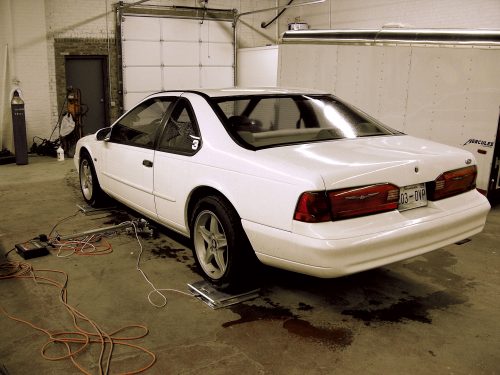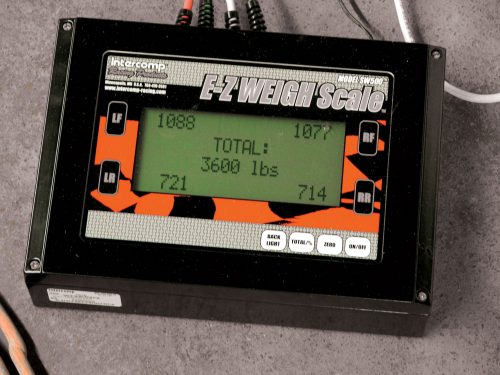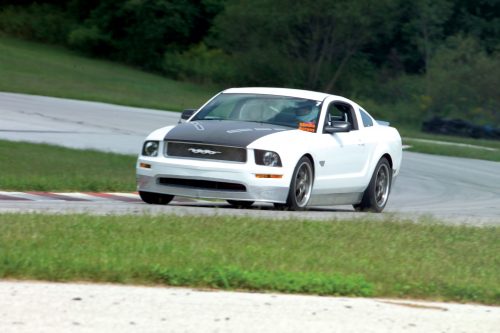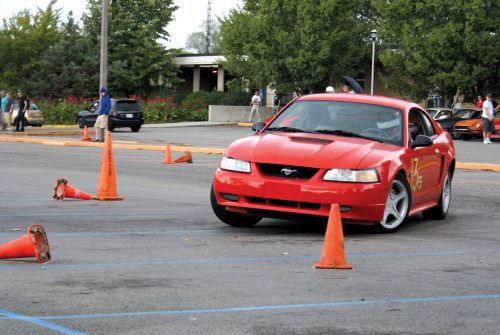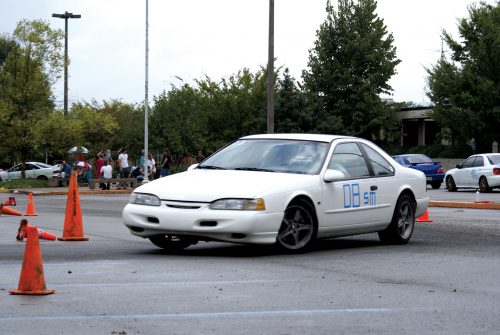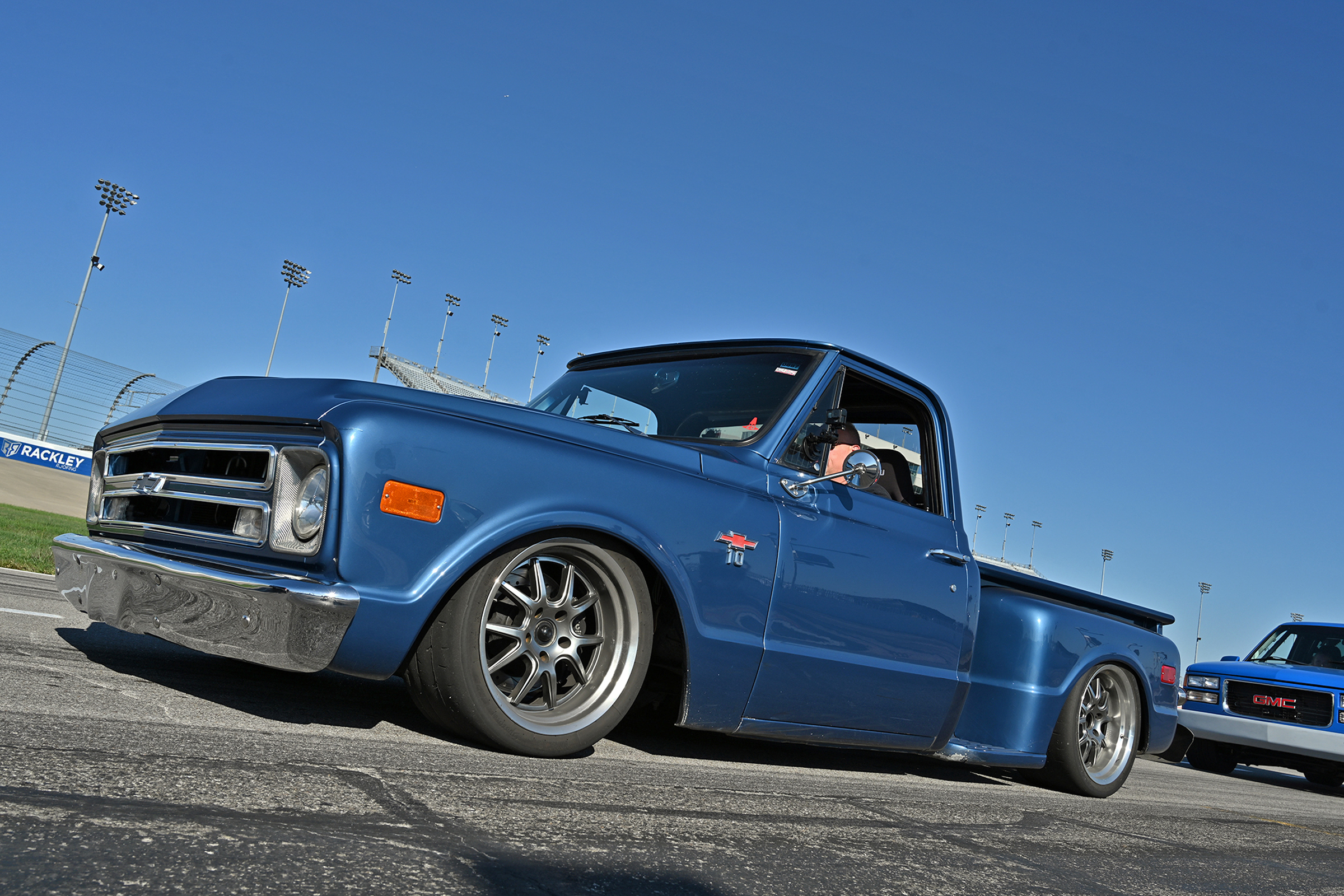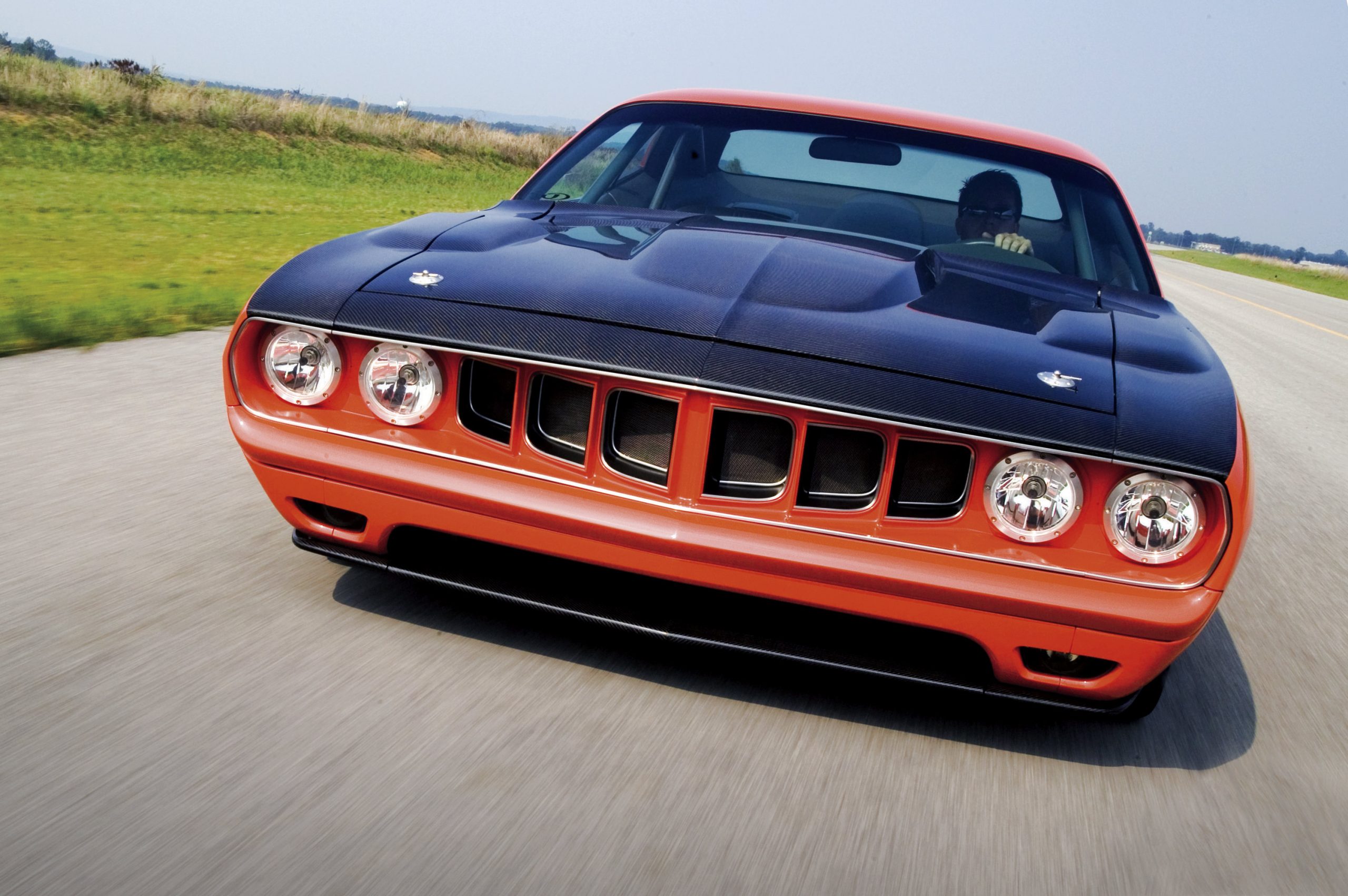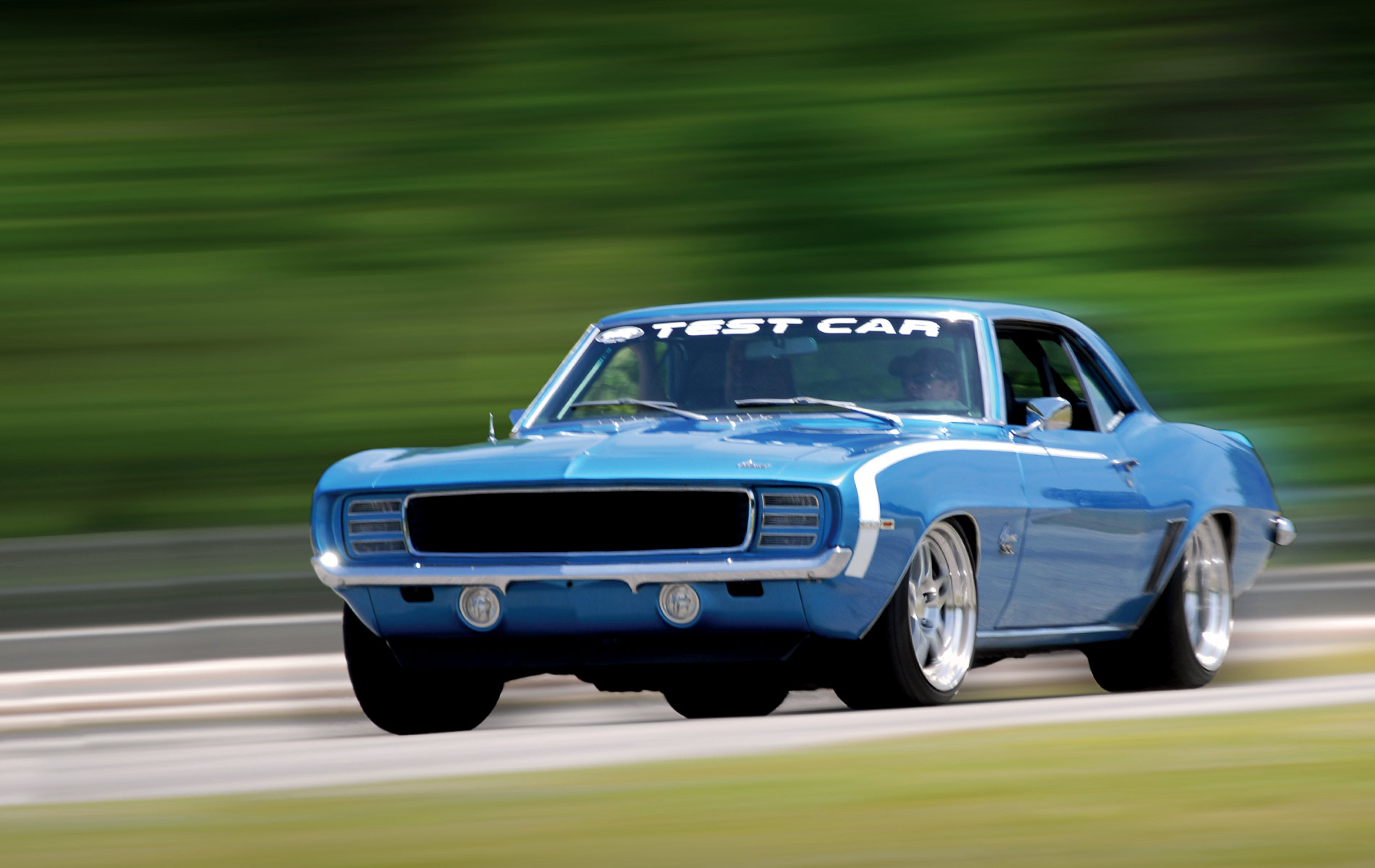GETTING THROUGH THE TURNS FASTER AND EASIER

Although modifying a car to handle well can often seem like a black art, virtually every aspect of handling comes down to three things: the weight of the vehicle, the traction generated by the tires, and the distribution of weight on each particular tire at a given moment.
Obviously, less weight tends to be better, along with more traction. Reducing weight is a simple enough concept, as is increasing traction through tire size, alignment and the coefficient of friction (tire compound) of the tires. The rest of the equation—your suspension—is ultimately a means of promoting, and resisting, weight transfer from one tire to another. Springs, shocks, sway bars, control arm layout and more should all eventually work toward this goal, though each works differently and performs a different task within the overall needs of the suspension.
As such, handling is typically a compromise, an attempt to increase the traction of one tire without decreasing the traction of another—which is a common unintended consequence of suspension alterations. In some forms of racing, trading off traction from one wheel to the other is perfectly acceptable—that’s why drag cars run stiff front suspensions and softer rear suspensions, to allow for dramatic weight transfer upon initial acceleration, planting the rear tires that propel the car forward. On a road course, managing weight transfer and corresponding traction is far more difficult, as conditions are different turn after turn.

To understand how to manage your suspension, you need to understand its basic workings. Different Fords come with different kinds of suspensions—mostly McPherson struts or unequal-length control arms in front, while rear suspensions include leaf springs, four-links, three-links, Watts links and unequal-length control arms. In each case, all work to accomplish the same thing, yet they do it differently, even though the focus of the basic suspension components remains the same—springs are designed to counteract the effects of physics as your car corners (inertia and momentum cause the car to lean outward in a turn, so the outer springs push back in an attempt to level the car). Shock absorbers work to control the action of the spring, and without them, any car would constantly porpoise back and forth, as one set of springs transfers the weight of the car to the other set. Sway bars tie the right and left sides of the suspension to the frame, which, according to their size, minimize the tendency of the inside and outside springs to counteract each other through a corner (an act that causes physics, and gravity, to take over). And, with few exceptions, physics and gravity do exactly the opposite of what you’d like them to do in handling. These exceptions typically come when traveling in a straight line, as stopping imposes weight on the front end, and the front brakes, and acceleration puts weight on the rear suspension and the rear wheels.
It’s important to understand these functions because if you plan to change any of these individual components, the way they interact with one another will change. And while upgrading individual components may seem to offer an improvement in performance, it’s also true that mixing and matching parts, or not understanding how certain adjustments will affect the car, can easily hurt performance.
Don’t Forget the Tools!
Tools that help you diagnose problems and tune them on your car can be every bit as helpful as the parts you bolt on your car. Examples of these tools include camber/caster gauges, wheel scales, air-pressure equalizers and much more. The first allows you to make sure your suspension and tires are tuned for optimum traction. Use one of these tools in conjunction with camber/caster plates (necessary for tuning McPherson strut-equipped Mustangs) to quickly and easily dial your car in at that track or for the ride home. Wheel scales allow you to determine your car’s weight and weight bias—use this tool in conjunction with your adjustable coilovers or Air Ride suspension to put weight on the corner that needs it most. Ideally, your cross weights (left front + right rear relative to right front + left rear) will be equal, a situation that should help your car turn equally well to the left and right. And adjusting your air pressure is among the simplest changes you can make—adding pressure will act like installing a stiffer spring, and removing pressure will act like installing a softer spring. Use a bleeder that connects the left and right tires to make sure the pressure in each is equal.
Two more simple and non-automotive tools are useful in diagnosing what your car is doing wrong through the corners. The first is shoe polish—just put a stripe of white shoe polish from your rim to your tire’s treads and you’ll be able to tell if they’re rolling over on their sidewall during cornering. If so, you’re losing traction and you need to increase your air pressure. The second tool is a camera. While it sounds obvious, you would be surprised how many people don’t bother to have a friend photograph their car as it corners. A good photograph can reveal a lot of information regarding the attitude of your car and its tires—after all, you can’t use wheel scales or a camber gauge while your car is moving, so a camera is one of the best dynamic diagnosis tools you can find.

Step Two: Traction
Without question, the single most effective parts change you can make on your vehicle is to install better tires. With very few exceptions, no Ford leaves the factory with really good tires, as all production tires are also built on compromise—handling and longevity. The new Mustang GT, for example, rolls on 235/55ZR17 all-season tires that Ford chose primarily to improve wet-weather handling by creating a smaller footprint and larger water escape routes (larger tires can actually worsen wet handling in some cases). But there are much better ways to improve handling in all weather. No matter which tire manufacturer you prefer, they offer something better than the tires your Ford came with originally.
However, tire performance is yet another area where extra performance costs extra money. In this case, though, we strongly recommend buying the best tires you can afford, since tires will make such a dramatic difference in handling. On our autocross ’95 Thunderbird, for example, we run 255/45ZR17 Goodyear F1 GS-D3 tires, but other examples of great tires include the BFGoodrich g-Force KD, Nitto 555, Michelin Pilot Sport 2 and Yokohama AVS Sport. But how can you tell which tires are better than others? It’s not an exact science, but the lower the tire-wear rating, the stickier the tire compound probably is, and the quicker (sooner) it will wear.
Another critical component of tire selection is tire alignment. All Mustangs since the Fox body use McPherson struts in front, which means they’re not very adjustable without the aid of an alignment kit. These kits bolt atop the strut tower and increase the range of adjustment for camber and caster; in some cases, these kits are actually necessary on a lowered car, as the unmodified limited range of adjustment cannot compensate for the lowered ride height. Like tires, these kits are definitely worth spending your money on, and they are available from many companies, including Steeda, Maximum Motorsports, Global West and many more.

Replacing Suspension Parts
Just because you can spend a ton of money on your car doesn’t mean you need to, or that you should. To spend your money wisely, your best bet is to figure out exactly what your car is doing wrong and remedy its worst problems first. Once you’ve determined the car’s most serious handling problems, you can then look for a suitable, and affordable, solution. And remember to use specific components to fix specific problems. Don’t assume a basic coil-spring lowering kit will work miracles, although it can go a long way toward addressing a suspension that’s simply overly soft. Likewise, use a larger sway bar in the rear of your car to counter a specific understeer problem, but not because of the notion that a bigger bar must be better under all circumstances—it is not.
Fortunately, the aftermarket has blessed most Fords, especially the Fox-body and newer Mustangs, with aftermarket solutions to any possible problem your car may have. Companies such as Maximum Motorsports, Roush, Steeda, Saleen, Griggs Racing, Global West, Hotchkis, Addco, Eibach, H&R, Bilstein, Koni and many more offer everything from bushings to springs to complete packaged suspension systems to remedy problems from wheel hop to just plain lack of grip. And these parts generally deliver on their manufacturers’ claims.
Weight
Colin Chapman, founder of British carmaker Lotus, was famous for the concept of “adding lightness” to a vehicle. His cars were almost always underpowered, but they were always lighter than their competition, too, and they won more often than not. Adding lightness to most Fords is fairly easy, as the aftermarket abounds in items such as tubular K-members, control arms, fiberglass hoods, Lexan windows and more.
Unfortunately, short of stripping weight from your car, shedding pounds can be expensive. Ford builds its cars primarily from stamped steel and cast iron because those materials are cheap. So, any other lightweight materials, such as aluminum or carbon fiber, or any of the alternate methods of construction, such as tubular steel, which is lighter, are also more expensive. Shaving weight is probably something to pursue only after you have your suspension sorted out and aligned properly, at which point losing weight—in a balanced fashion—from around the car will cause it to do everything just a bit better. The pursuit of lighter weight can also be strangely gratifying, and addicting, so indulge yourself carefully.

Putting It All Together
Any one of us who has ever bought aftermarket parts for our cars is probably guilty of buying a part or two more because we wanted them than because the car actually needed them. We are as guilty as any of you, but that doesn’t mean such behavior is smart. It is possible to improve the handling of your Ford first by baseline testing at the track and then diagnosing your car’s shortcomings, and only then buying the aftermarket products that are most likely to alter the specific flaws you have diagnosed for your model Ford. Having paid for these items, take advantage of any adjustability they offer wisely, because that’s what you bought them for in the first place. Follow these simple steps and you just may have the best-handling Ford on your block.
Article Sources
Steeda
1-800-950-0774
Steeda Autosports - Valdosta, GA 2019 Steeda Way Valdosta, GA 31601






